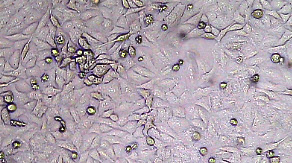What are the Cell Cytotoxicity Studies?
Cell cytotoxicity studies are essential in evaluating the
toxic effects of various compounds on living cells. These studies involve
assessing the impact of substances on cell viability, proliferation, and
overall cell health. Here is a detailed overview of cell cytotoxicity studies,
including their types, classification, and applications in the pharmaceutical
and biomedical research fields:
Types of Cell Cytotoxicity Studies:
Cell Viability Assays: These assays measure the number of live cells after exposure to a compound. Common viability assays include the MTT assay, Alamar Blue assay, and resazurin assay.
Cell Proliferation Assays: These assays assess the effect of
compounds on cell division and growth. Examples include the BrdU incorporation
assay, EdU assay, and CFSE staining assay.
Apoptosis/Necrosis Assays: These assays determine the type
of cell death induced by a compound. They can include Annexin V staining, TUNEL
assay, and propidium iodide staining.
Cell Morphology Analysis: This involves examining cellular
changes, such as alterations in shape, size, or structure, caused by exposure
to compounds. It can be performed using microscopy techniques.
Classification of Cell Cytotoxicity:
Acute Cytotoxicity: This classification refers to the immediate toxic effects of a compound on cells, typically observed within a short exposure period (e.g., 24-72 hours).
Chronic Cytotoxicity: In this classification, cells are
exposed to compounds for an extended period, reflecting long-term or repeated
exposure scenarios.
Dose-Dependent Cytotoxicity: It describes the cytotoxic
effects of a compound that increase with higher concentrations or doses.
Time-Dependent Cytotoxicity: This classification represents
cytotoxic effects that intensify over time, even at constant or decreasing
compound concentrations.
Applications and Uses in Pharmaceutical and Biomedical
Research:
Drug Discovery and Development: Cell cytotoxicity studies play a crucial role in evaluating the potential toxic effects of drug candidates during the early stages of drug discovery. They help identify compounds that are safe and effective for further development.
Toxicology Screening: Cytotoxicity assays are used to assess
the toxic effects of various substances, such as chemicals, environmental
pollutants, and consumer products, to ensure they meet safety standards and
regulations.
Cancer Research: Cell cytotoxicity studies are employed to
investigate the cytotoxic effects of anticancer drugs on tumor cells. These
studies aid in identifying potential therapeutic agents and understanding their
mechanisms of action.
Biomaterial Evaluation: Cytotoxicity assessments are
conducted on biomaterials, such as implants, scaffolds, and drug delivery
systems, to determine their compatibility with living cells and tissues.
Environmental Toxicology: Cell cytotoxicity studies help
evaluate the impact of pollutants, contaminants, and hazardous substances on
living organisms and ecosystems.
Personalized Medicine: Cytotoxicity assays can be used to
assess the sensitivity of patient-derived cells to specific drugs, allowing
personalized treatment strategies for diseases such as cancer.
Comparative Toxicology: These studies compare the cytotoxic
effects of different compounds or formulations to identify the most suitable
options for specific applications.
In summary, cell cytotoxicity studies involve assessing the toxic effects of compounds on living cells. They are classified based on acute/chronic effects, dose/time dependency, and involve various assays to measure viability, proliferation, apoptosis/necrosis, and cellular morphology. These studies have broad applications in pharmaceutical and biomedical research, including drug discovery, toxicology screening, cancer research, biomaterial evaluation, environmental toxicology, personalized medicine, and comparative toxicology.
What are the Cell Cytotoxicity Studies?






0 Comments